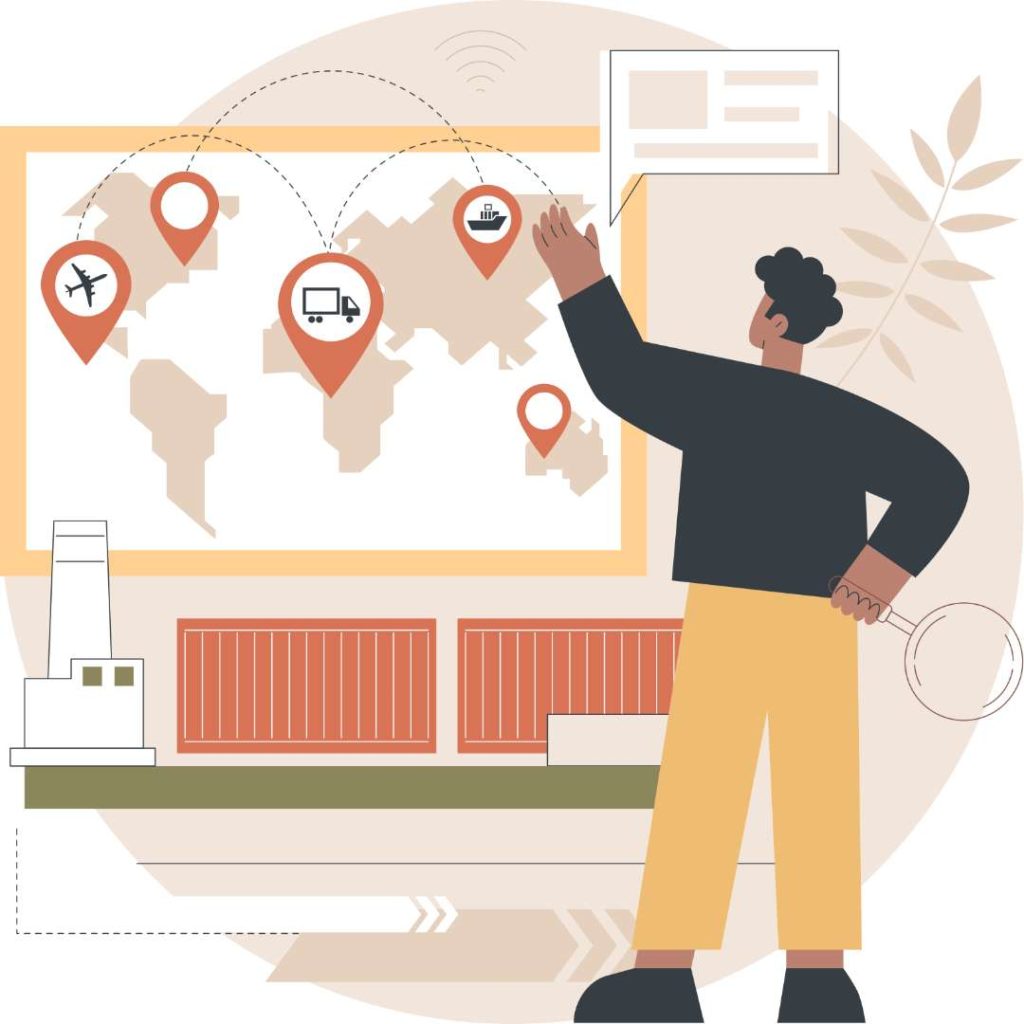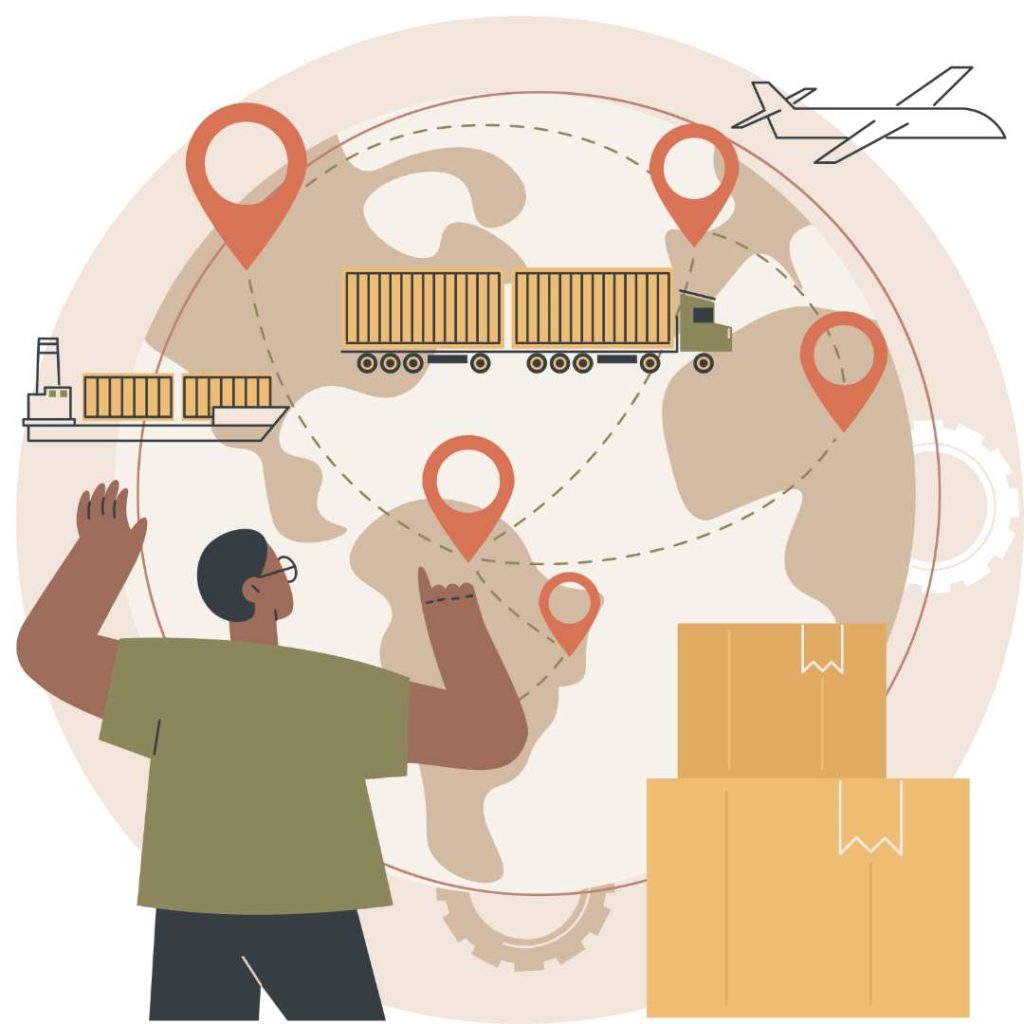
What Factors Should Organizations Consider Before Outsourcing Their Internal Audit Functions?
+91 1141182211 Outsourcing has become a strategic choice for many organizations looking to streamline operations, reduce costs, and enhance efficiency.

Last-mile delivery is a critical step in the supply chain as it directly impacts customer satisfaction. The delivery process involves bringing a product to the customer’s doorstep and can significantly affect the customer’s experience.
With the rise of e-commerce and fast delivery expectations, companies face new challenges in last-mile delivery such as lack of visibility, high costs, and demand for speed and reliability. To overcome these challenges, companies are turning to streamline last-mile delivery, which involves improving processes and technology to make delivery more efficient, reliable, and cost-effective.
This article will examine the significance of last-mile delivery, the challenges faced, and the benefits of streamlining the process. It will also explore various strategies for streamlining and the future of last-mile delivery in the supply chain. By understanding the importance of streamlining, companies can take steps to enhance the customer experience and streamline their supply chain.
Last-mile delivery is the final step in the supply chain and refers to the process of delivering a product to the customer’s doorstep. This step is critical in the supply chain as it directly impacts the customer’s experience and satisfaction. The success of last-mile delivery can make or break the customer’s perception of a company and its products.
Traditionally, last-mile delivery was done by shipping companies using their own delivery trucks and drivers. This process was often slow, unreliable, and lacked visibility for both the customer and the company. The increasing demand for e-commerce and fast delivery times has put pressure on the traditional last-mile delivery process, leading to inefficiencies and decreased customer satisfaction.

The growing trend of e-commerce has had a significant impact on last-mile delivery. With more customers shopping online, companies must adapt to meet the increased demand for fast and reliable delivery. This has led to the growth of new delivery methods, such as crowdsourced delivery and the use of drones, to improve the efficiency of the last-mile delivery process. The increasing demand for e-commerce has also led to the rise of new players in the delivery market, such as Amazon and UPS, who are investing in technology and processes to streamline last-mile delivery.
Lastly, last-mile delivery is a crucial step in the supply chain that directly impacts the customer’s experience and satisfaction. The traditional last-mile delivery process faces challenges such as inefficiency and lack of visibility, and the growing trend of e-commerce has only increased the pressure on the process. Companies must adapt and find ways to improve the efficiency and reliability of last-mile delivery to meet the demands of their customers and stay competitive in the market.
Companies in the last-mile delivery process face a number of challenges that can impact the efficiency and reliability of the delivery process. These challenges include:
One of the biggest challenges in last-mile delivery is the lack of visibility and control over the delivery process. Traditional delivery methods often leave companies in the dark about the delivery status and location, leading to inefficiencies and decreased customer satisfaction.
The delivery process is often associated with high costs, such as fuel and labor costs, which can lead to inefficiencies in the supply chain. In addition, inefficient delivery processes can result in longer delivery times and increased costs for the company.
With the rise of e-commerce, customers are demanding faster and more reliable delivery times. Companies must meet these demands to remain competitive and retain their customers.
These challenges can have a significant impact on the supply chain and customer satisfaction. Inefficiencies in the delivery process can result in longer delivery times, increased costs, and decreased customer satisfaction. Companies that fail to address these challenges risk losing customers and damaging their reputation.
To overcome these challenges, companies must find ways to streamline the last-mile delivery process. By improving the processes and technology used in delivery, companies can increase visibility and control, reduce costs, and improve delivery speed and reliability. Streamlining last-mile delivery can help companies create a smoother and more efficient supply chain, leading to increased customer satisfaction and a competitive advantage in the market.
The benefits of streamlining last-mile delivery are numerous and can have a significant impact on both the supply chain and the customer experience. By improving the processes and technology used in delivery, companies can reap the following benefits:
Faster delivery times, increased reliability, and improved visibility and control can all contribute to a better customer experience. Customers want their deliveries to be fast, reliable, and easy to track, and by streamlining the delivery process, companies can meet these demands and improve customer satisfaction.
Streamlining the delivery process can lead to increased efficiency and cost savings for the company. By reducing inefficiencies and optimizing the delivery process, companies can reduce delivery times and lower costs, resulting in increased profitability and competitiveness.
A smoother and more efficient delivery process can result in better overall supply chain management. With improved visibility and control, companies can make better decisions about inventory management, routing, and delivery schedules, resulting in a more streamlined and efficient supply chain.
Therefore, streamlining last-mile delivery is essential for companies to remain competitive in the market and to improve the customer experience. By improving the processes and technology used in delivery, companies can increase efficiency, reduce costs, and improve delivery speed and reliability, leading to increased customer satisfaction and a better overall supply chain.
There are several strategies that companies can adopt to streamline the last-mile delivery process and improve the overall supply chain. Some of these strategies include:
Technology can play a crucial role in streamlining last-mile delivery. From GPS tracking systems and automated routing algorithms to predictive analytics and real-time communication, technology can provide the visibility and control that companies need to optimize their delivery processes.
Data analytics can be used to optimize delivery routes and delivery times. By analyzing delivery data, companies can identify inefficiencies in the delivery process and make changes to improve the speed and reliability of deliveries.
Companies can partner with third-party delivery providers to improve delivery speed and reliability. These providers have the resources and expertise to handle the complex logistics involved in last-mile delivery, allowing companies to focus on their core business operations.
Improving communication and coordination between all stakeholders in the supply chain can greatly improve the delivery process. By communicating regularly and working together, companies can ensure that everyone is on the same page, reducing the risk of errors and improving the overall efficiency of the supply chain.
Streamlining last-mile delivery is essential for companies to remain competitive and meet the growing demands of the market. By adopting these strategies, companies can improve delivery speed and reliability, increase efficiency and cost savings, and improve the overall supply chain.

The last-mile delivery landscape is constantly evolving, with new technologies and advancements emerging to meet the demands of the market. As e-commerce continues to grow, the need for fast, reliable, and cost-effective last-mile delivery will only increase.
To keep up with these demands, companies must continue to innovate and find new ways to streamline the last-mile delivery process. This may include the adoption of new technologies, such as drones and autonomous vehicles, which have the potential to greatly improve delivery speed and reliability.
Another area for potential improvement is the use of data analytics. By leveraging data and advanced algorithms, companies can better understand the delivery process and make informed decisions to improve efficiency and reduce costs.
Additionally, as a business owner, you want to make sure that all your hard work doesn’t go unnoticed by clients or potential customers. When used correctly, software solutions designed to support CSR can help big businesses promote their activities.
Furthermore, the future of last-mile delivery holds great potential for further improvements and innovation. Companies that are proactive in streamlining the delivery process will be well positioned to meet the demands of the market and provide their customers with the level of service they expect. Companies must continue to invest in technology, data analytics, and partnerships to ensure a smooth and efficient supply chain.
In this article, we have explored the importance of last-mile delivery in the supply chain, the challenges faced by companies, and the benefits of streamlining the process. By understanding these issues and taking steps to improve the delivery process, companies can create a smoother and more efficient supply chain that provides a better customer experience.
Like this article?
More To Explore

What Factors Should Organizations Consider Before Outsourcing Their Internal Audit Functions?
+91 1141182211 Outsourcing has become a strategic choice for many organizations looking to streamline operations, reduce costs, and enhance efficiency.

Outsourcing Internal Audit: Evaluating the Upsides and Downsides for Your Organization
+91 1141182211 In today’s dynamic business environment, companies face increasing pressure to enhance efficiency, manage risks effectively, and ensure compliance

A Background Verification Guide: Frequently Asked Questions and Their Answers
+91 1141182211 Background verification (BGV) is a crucial process used by employers to ensure they are hiring candidates with accurate